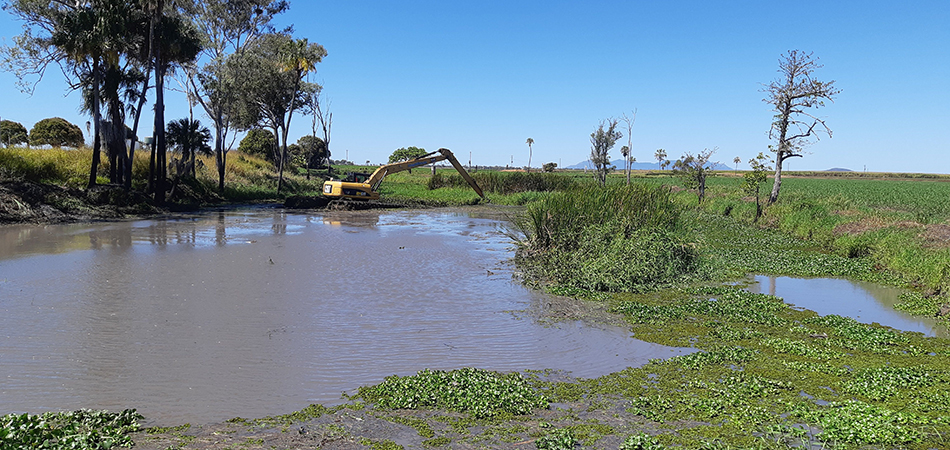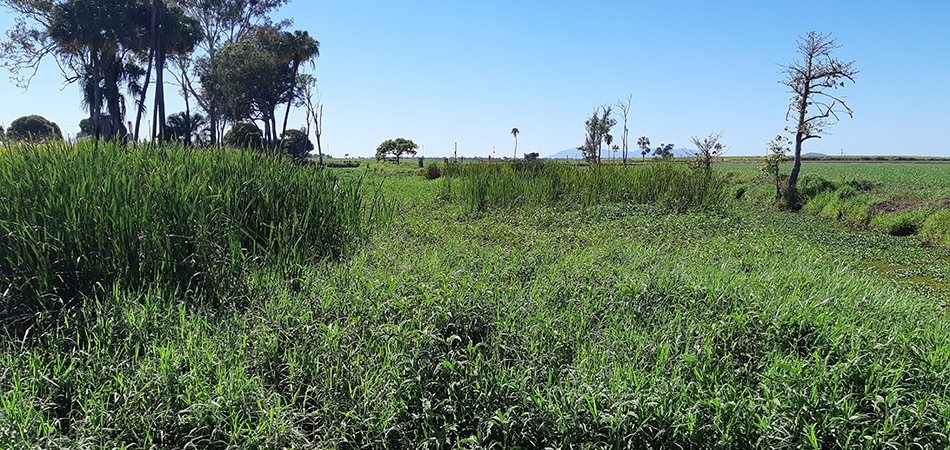Before weed removal work began.

During weed removal work.
Weed removal to benefit animal habitat and farm productivity
Work is underway at Merryplain’s Creek to remove invasive aquatic weeds for use as a nutrient-rich compost on local farms.
NQ Dry Tropics Senior Project officer, Scott Fry, said the work – through the Queensland Government-funded Reducing Burdekin Sediment project – would improve wetland health while potentially boosting farmers’ bottom line.
“If typha, more commonly known as bullrush, or cumbungi, isn’t properly controlled, it covers the entire creek surface,” Mr Fry said.
“This restricts wader bird access to food, and prevents native fish such as barramundi and mangrove jack from migrating between freshwater and the sea to breed.”
“As typha decomposes, it uses up oxygen, contributing to fish kills and reducing the quality of water flowing out to the Great Barrier Reef.
“Removing it will open up the waterway to restore habitat, protect against localised flooding, and improve irrigation efficiency to water board customers.
“We plan to turn it into a compost as part of a trial on surrounding cane farms to see if we can improve soil health and humus levels, and increase the water holding capacity of sandier soils,” he said.
Merryplain’s Creek, south of Home Hill, is the third Lower Burdekin creek system targeted for weed removal this year by NQ Dry Tropics and partners Burdekin Shire Council and Lower Burdekin Water.
Prior to these works, 14 hectares of weed chokes were removed from Saltwater Creek, and 20 hectares from Alva Creek.
Mr Fry said it was important to leave some weeds in the creek.
“In shallower areas, typha does play a beneficial role by filtering nutrients out of the water column that naturally run off the landscape. It has what are known as biofilms along its stems that absorb the nutrients into the plants, which helps improve water quality. The problems occur when it is left unmanaged and chokes up the waterway,” he said.
The Reducing Burdekin Sediment project is funded by the Queensland Government’s Natural Resource Investment Program.

